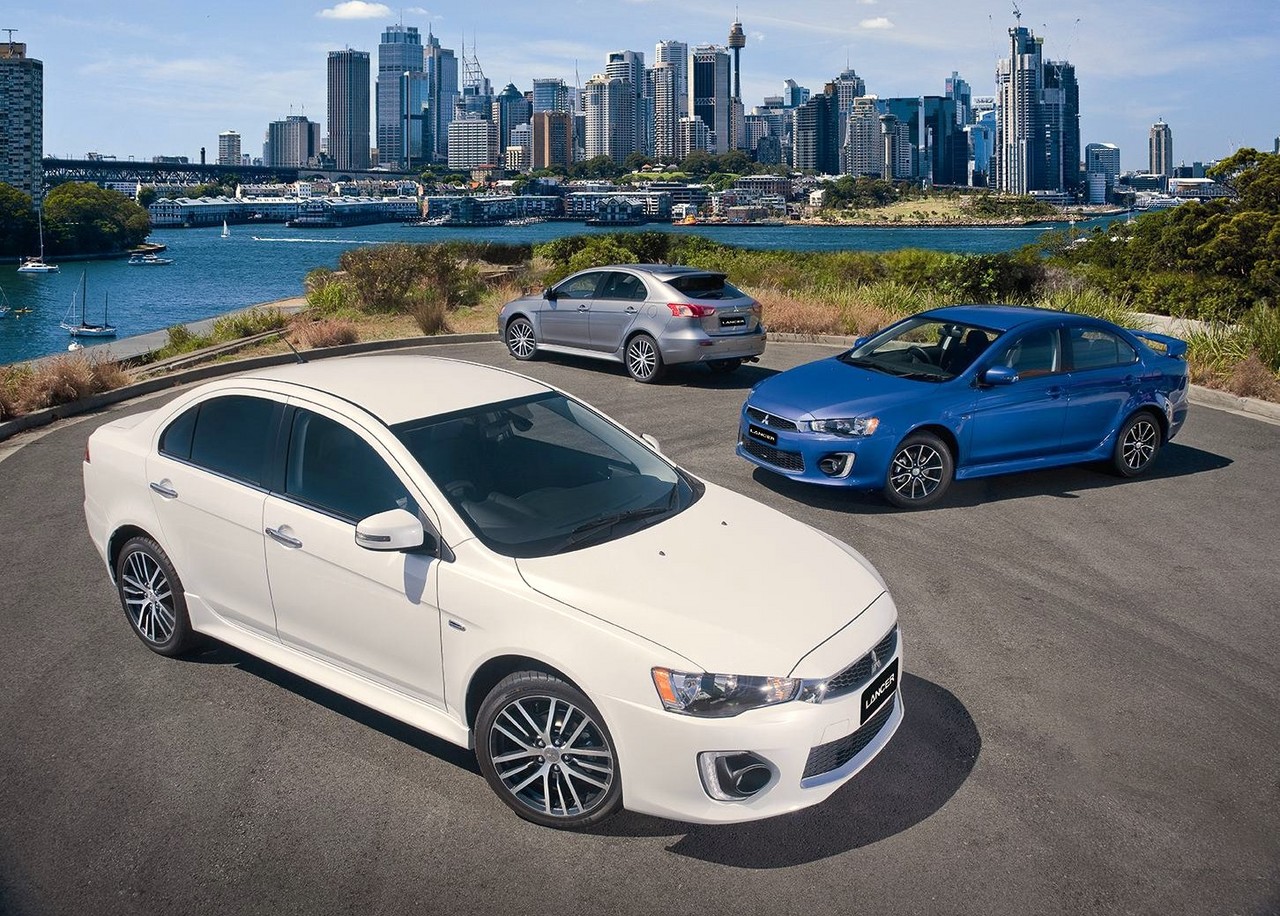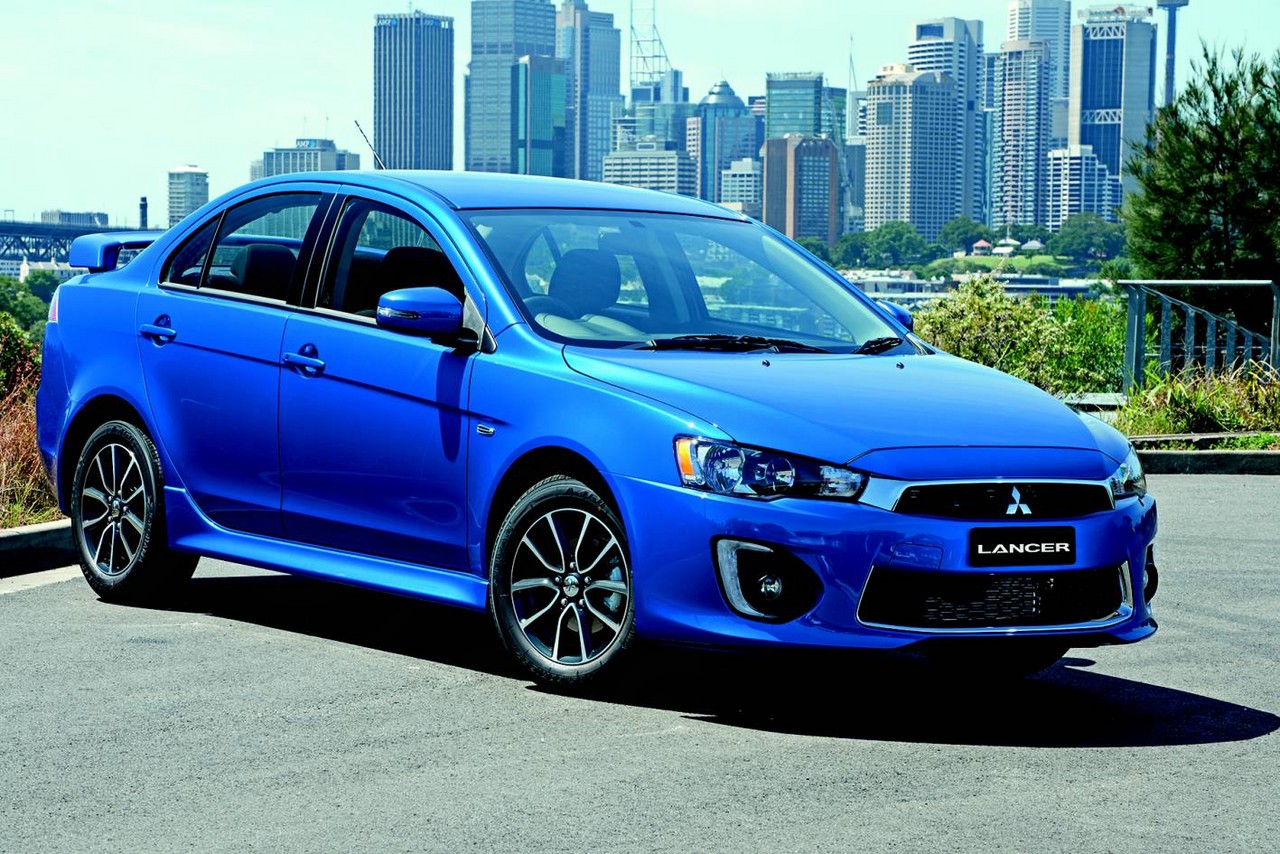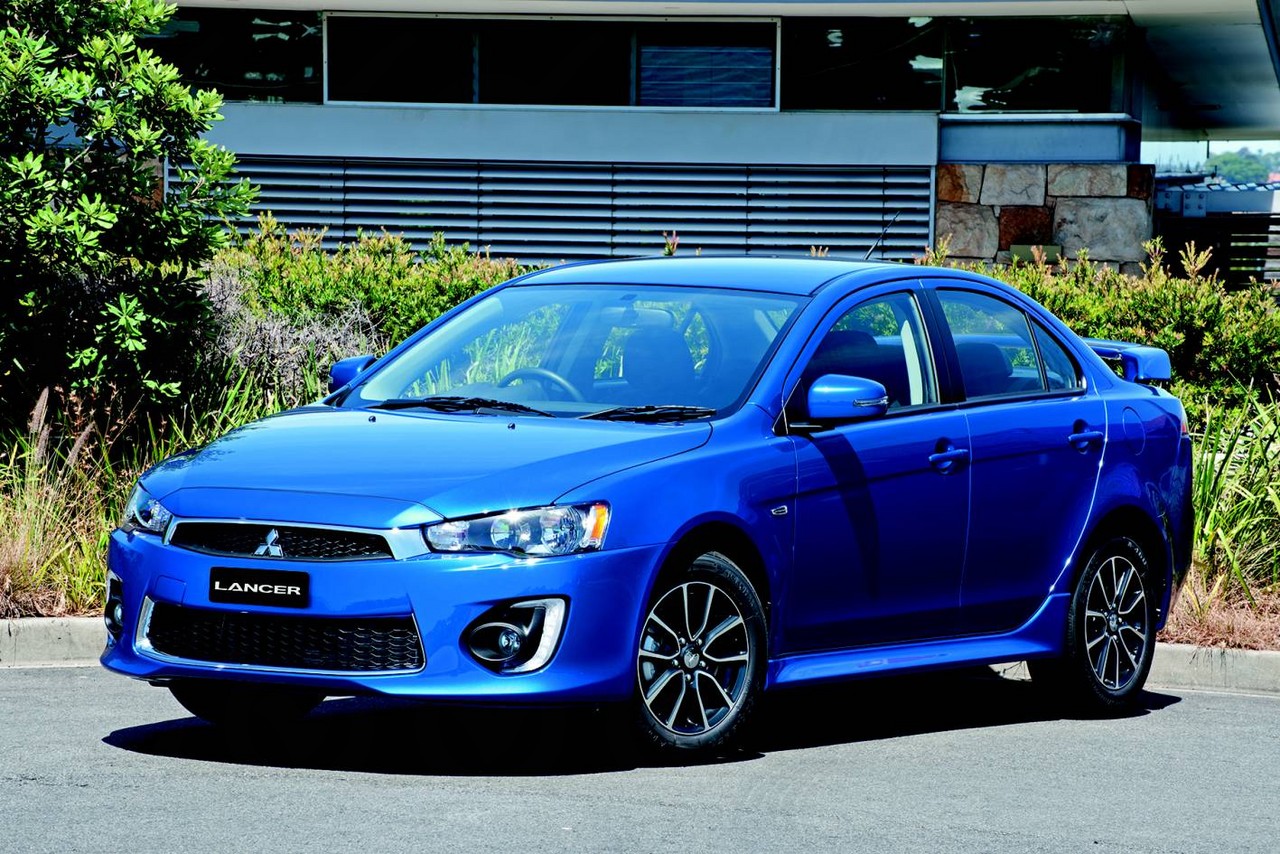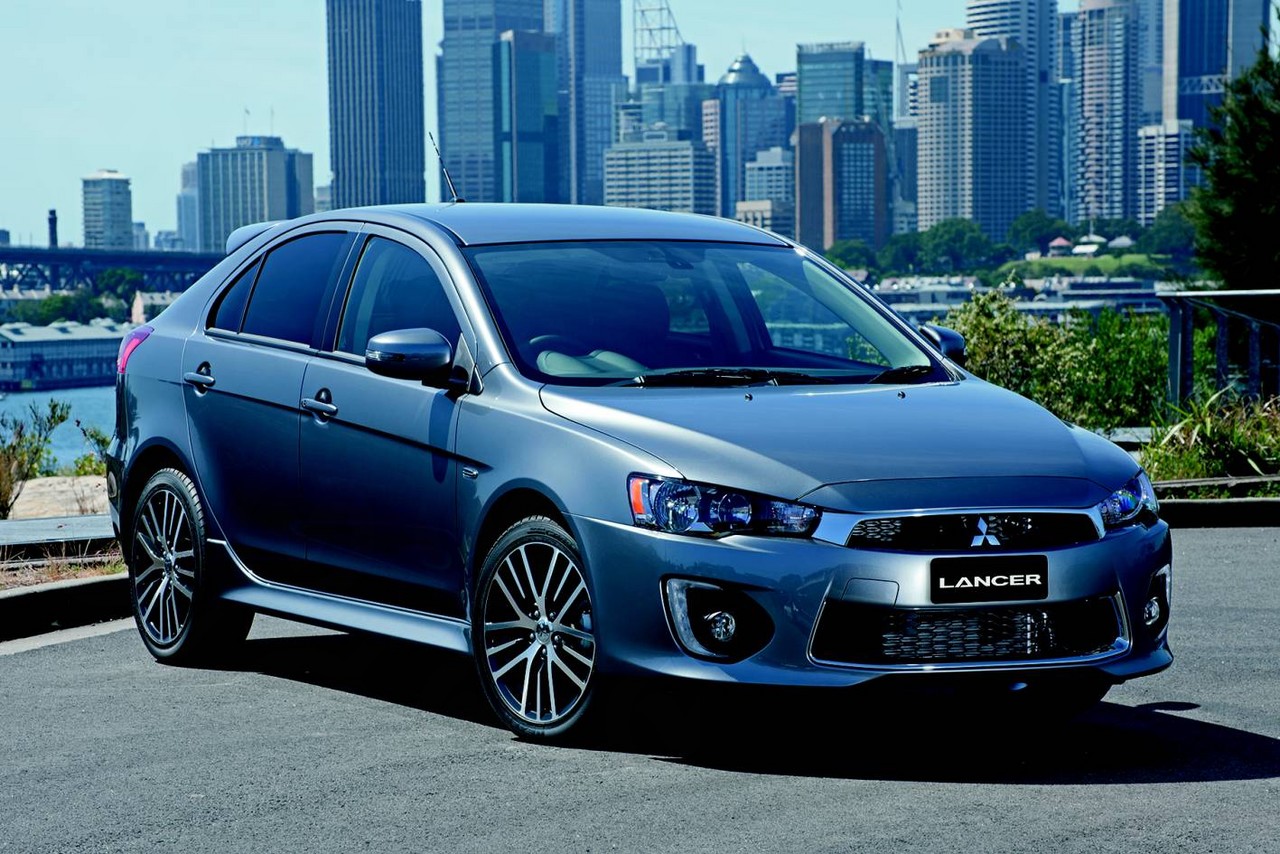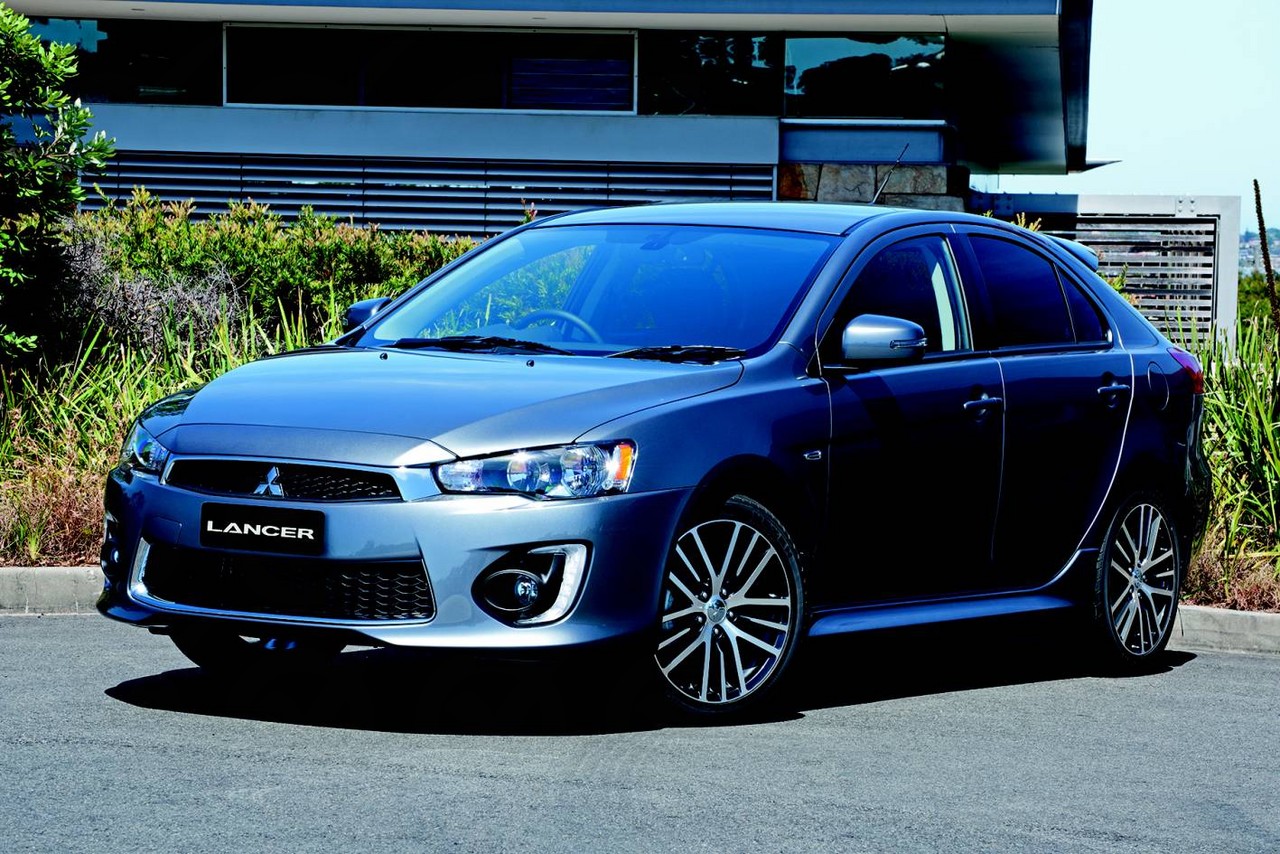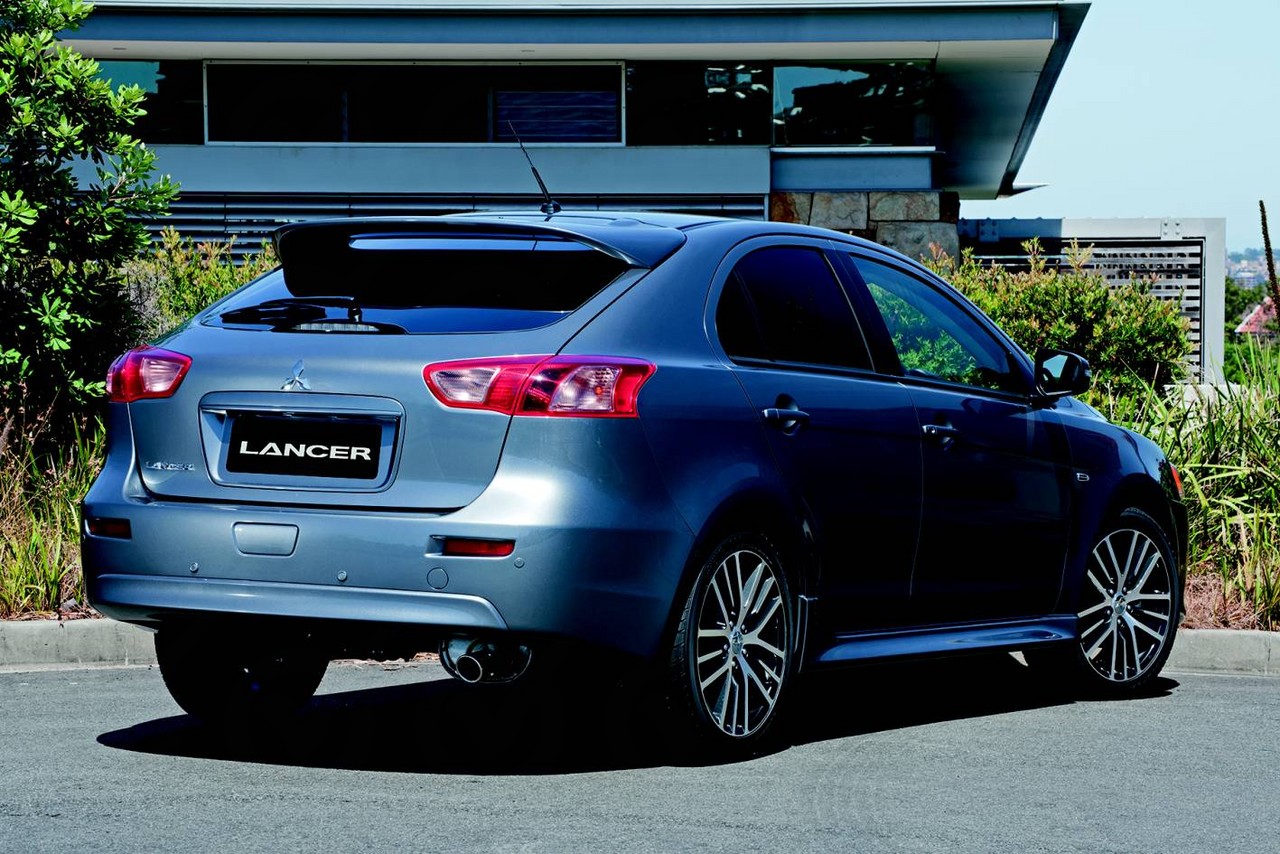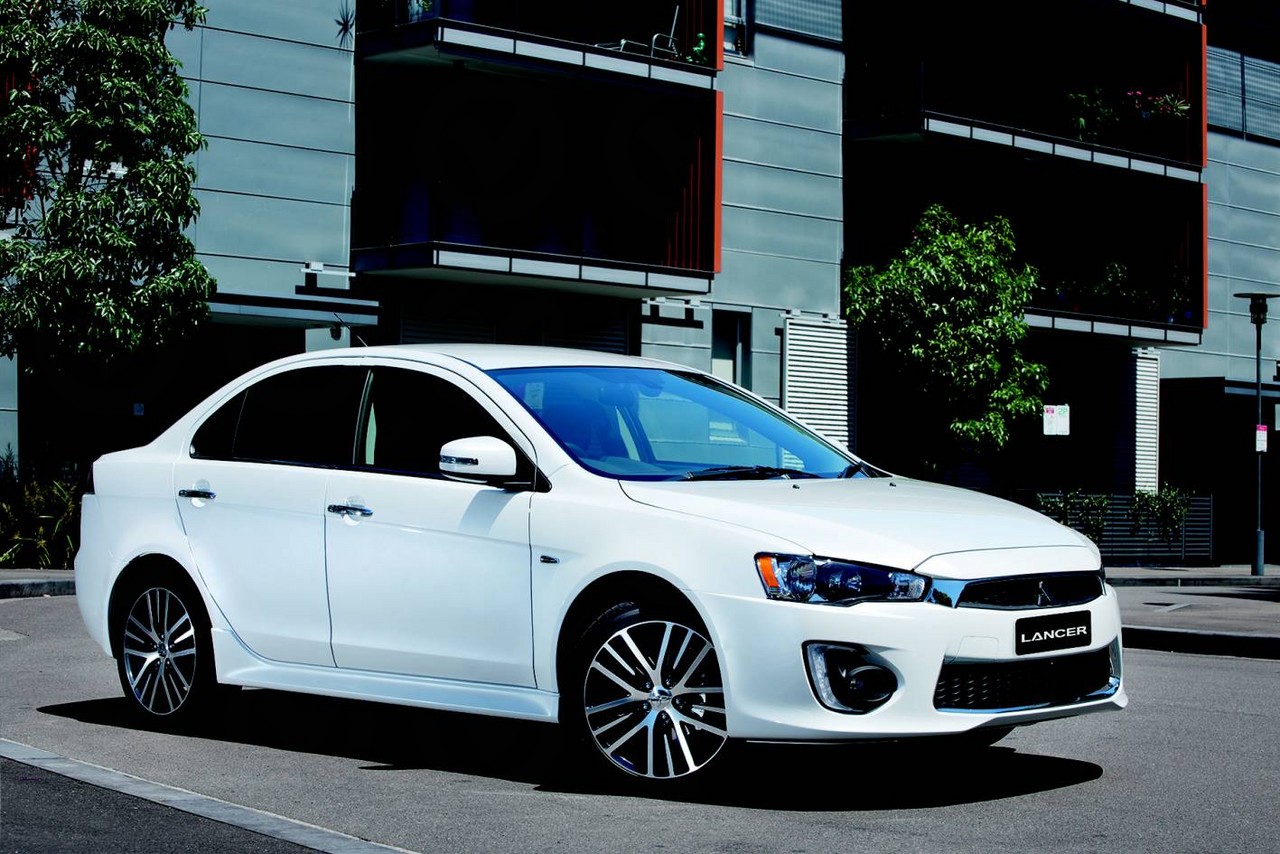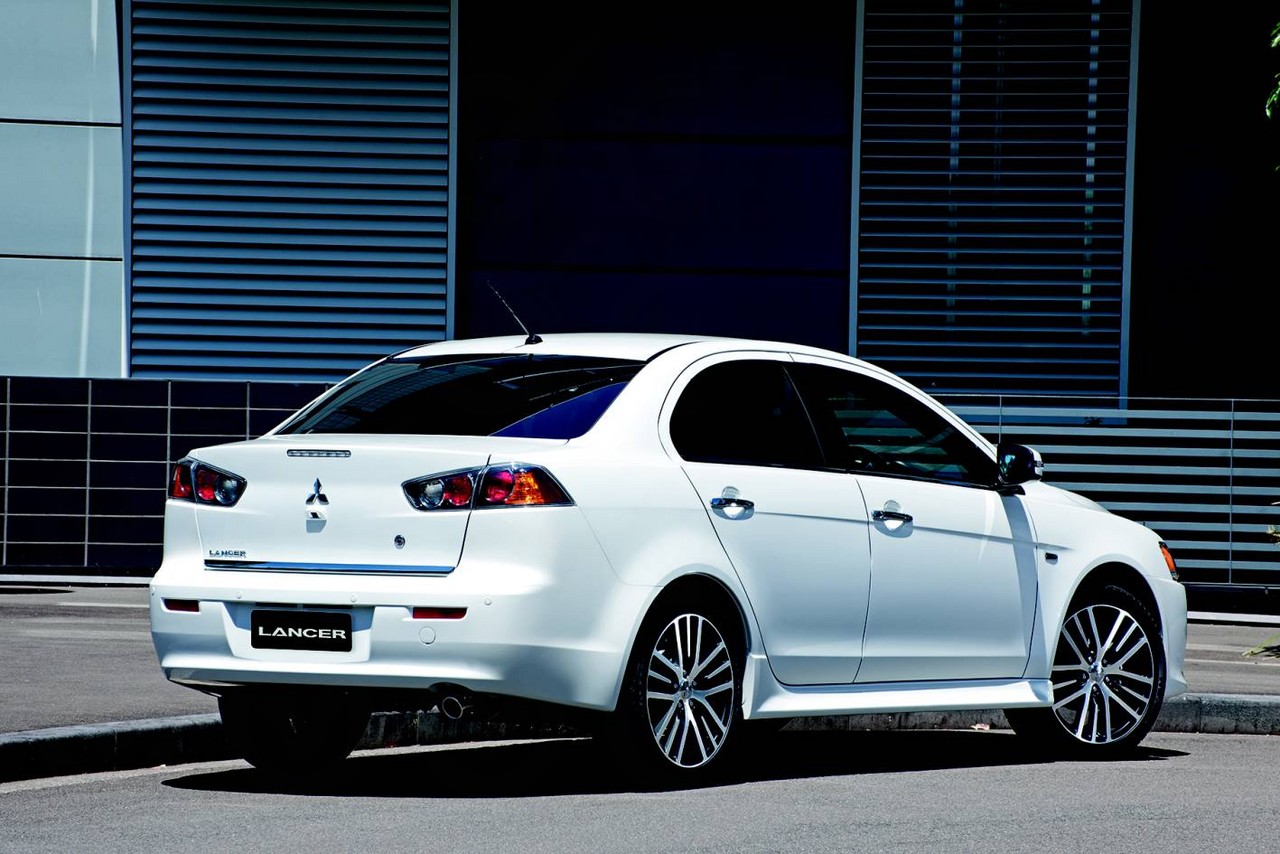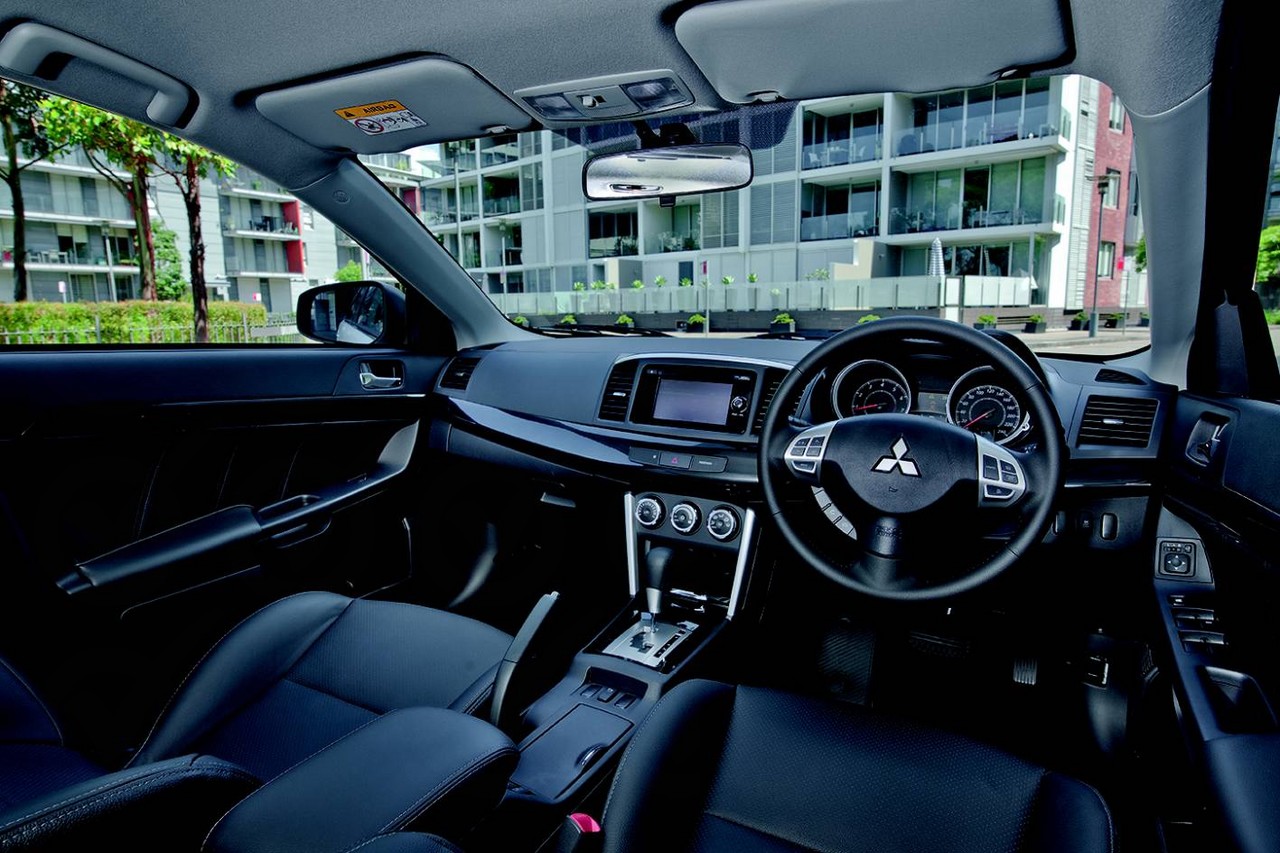
- Responsive 2.4-litre petrol engine
- Accomplished ride/handling balance
- Accurate steering provides good feel
- Droning noise from CVT when accelerating
- Flat front seats lack support
- Cabin lacks sound insulation
Overview
Released in Australia in November 2015, the Mitsubishi CF Lancer was available as a small sedan or hatchback (‘Sportback’). Manufactured in Japan, the front-wheel drive Mitsubishi CF Lancer was powered by 2.0- and 2.4-litre petrol engines that were mated to either five-speed manual or six-speed continuously variable transmissions.
Compared to the Mitsubishi CJ.II Lancer , the CF Lancer could be identified by its new front bumper design with integrated chrome accents, while there were also changed to the front fog lamps, side body skirts and alloy wheels. Inside, the CF Lancer introduced a high contrast instrument cluster, new front centre console with silver and black accents. Furthermore, standard features were extended to include a six speaker sound system, digital radio tuner (Digital Audio Broadcast, DAB), ‘Display Audio’ interface with a 6.1-inch colour touchscreen and front fog lights.
4B11 and 4B12 engines
The 2.0- and 2.4-litre four-cylinder petrol engines – Mitsubishi’s 4B11 and 4B12 engines, respectively – had an aluminium cylinder block and head, double overhead camshafts, four valves per cylinder, variable valve timing for both intake and exhaust valves (Mitsubishi’s MIVEC system) and multi-point fuel injection. While the 4B11 engine had a compression ratio of 10.0:1, the 4B12 engine had a compression ratio of 10.5:1.
| Body | Variant | Engine | Trans. | Peak power | Peak torque |
|---|---|---|---|---|---|
| Sedan | ES Sport, LS |
2.0-litre petrol I4 | 5sp man., 6sp CVT |
110 kW at 6000 rpm | 197 Nm at 4200 rpm |
| GSR | 2.4-litre petrol I4 | 5sp man., 6sp CVT |
125 kW at 6000 rpm | 226 Nm at 4100 rpm | |
| Sportback | GSR | 2.4-litre petrol I4 | 5sp man., 6sp CVT |
125 kW at 6000 rpm | 226 Nm at 4100 rpm |
Body and dimensions
Like the Mitsubishi CJ Lancer , the Mitsubishi CF Lancer was based on Mitsubishi’s ‘Reinforced Impact Safety Evolution’ (RISE) body. The CF Lancer sedan was 4625 mm long, 1760 mm wide, 1480 mm tall and had 2635 mm long wheelbase; its kerb mass ranged from 1295 kg to 1360 kg, while boot capacity was 400 litres. In contrast, the CF Lancer GSR Sportback was 15 mm longer (at 4640 mm) and had a 35 mm higher roofline (1515 mm); its kerb mass ranged from 1360 kg to 1390 kg and its luggage capacity was 330 litres.
Suspension and steering
The Mitsubishi CF Lancer had MacPherson strut front suspension and multi-link rear suspension (both with coil springs, hydraulic shock absorbers and anti-roll bars).
The CF Lancer had rack-and-pinion steering with, for models with the 2.0-litre 4B11 engine, electric power assistance. For the Lancer GSR, however, the steering had hydraulic power assistance.
Safety equipment
Standard safety equipment for the Mitsubishi CF Lancer included dual front airbags, a driver’s knee airbag, front seat-mounted side airbags, full-length curtain airbags (i.e. for front and rear occupants), ABS, electronic brake force distribution, brake assist, electronic stability control, traction control and front seatbelts with pre-tensioners and load limiters.
Brakes
The standard braking package for the Mitsubishi CF Lancer consisted of 276 mm by 26 mm ventilated front brakes disc and 262 mm by 10 mm solid rear discs. The Lancer GSR, however, had 294 mm by 26 mm ventilated front brake discs and 302 mm by 10 mm solid rear discs.
ANCAP and Euro NCAP testing
In ANCAP crash testing , a 2007 Lancer ES sedan – fitted with dual front airbags, a driver’s knee airbag, front side airbags and full-length curtain airbags – received a five star adult occupant protection rating with a score of 33.56 out of 37. In the frontal offset crash test, there was a slight risk of serious chest injury for the driver. In the side impact test, high loadings were applied to the dummy’s pelvis.
In Euro NCAP testing , a 2009 Lancer Sportback – fitted with dual front airbags, front side airbags and curtain airbags – received a five star safety rating which included an 81 per cent adult occupant protection rating and an 80 per child occupant protection rating. In the frontal offset impact, the head of the driver ‘bottomed out’ the airbag though the knees and femurs of the front occupants were well protected. In the pole test, protection of the chest was rated as weak, while protection of the abdomen was marginal.
Features: Lancer ES Sport
Standard features for the Lancer ES Sport consisted of 16 x 6.5JJ alloy wheels with 205/60 R16 92H tyres, six speaker sound system with a CD player, MP3-compatibility, auxiliary inputs (3.5 mm/USB/iPod), Bluetooth connectivity with voice activation and audio streaming, ‘Display Audio’ interface with 6.1-inch colour touch screen, climate control air conditioning, cloth seat trim, cruise control, front fog lights, leather-wrapped steering wheel with audio controls, 60/40 split and folding rear seats, remote central locking, power windows and mirrors, a tilt adjustable steering wheel, height adjustable driver’s seat, 12 volt power socket, trip computer, an immobiliser and rear spoiler.
Features: Lancer GSR Sportback
Relative to the ES Sport, the GSR Sportback was equipped with 18 x 7.0JJ alloy wheels with 215/45 R18 tyres, sports seats, automatic headlights, rain-sensing wipers, a leather-wrapped steering wheel and gearshift lever, proximity key (i.e. keyless entry), power folding door mirrors and alloy sports pedals. Visual cues for the Lancer GSR included a side air dam, rear spoiler and chrome exhaust tip.
Features: Lancer LS
Compared to the ES Sport, the Lancer LS was further equipped 18 x 7.0JJ alloy wheels, leather-faced seats, a power adjustable driver’s seat, heated front seats, automatic headlights, rain-sensing wipers, leather-wrapped steering wheel, proximity key (i.e. keyless entry), power folding door mirrors and rear privacy glass. Visual cues for the Lancer LS included its chrome rear garnish and chrome exhaust tip.
Brochure and specifications
Related links
